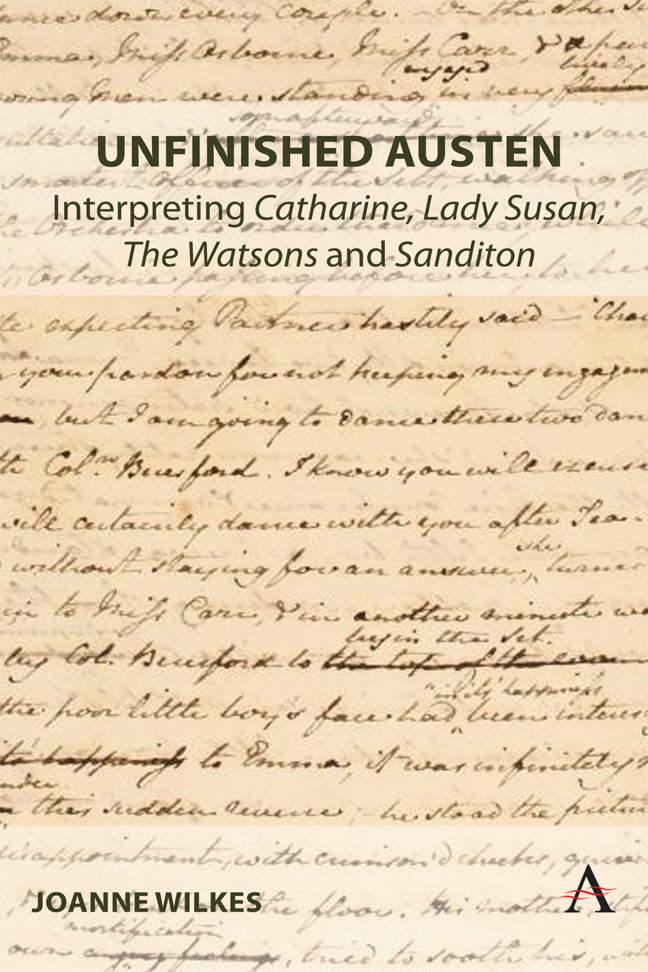 Unfinished Austen
Unfinished Austen 6 - Conclusion
Published online by Cambridge University Press: 29 February 2024
Summary
As noted in the Introduction, Ashley Tauchert has articulated the dynamic between realism and romantic motifs in Austen's completed novels: ‘Austen is working her extraordinarily plausible realism through the magical framework of romance’, in that she deploys ‘aspects of a romance narrative paradigm to structure and to finally resolve, her “realist” representational content’. We know that we are eventually ‘hastening together to perfect felicity’, as the ending of Northanger Abbey points out. Moreover, Tauchert argues, this ending is effected, to a greater or lesser extent, by a significant change in the heroine's understanding of her love interest, and thus her understanding of herself. However these processes play out – and of course they vary among the novels – and there is a strong focus on the heroine's internal life.
What happens in the unfinished texts discussed here is that this development fails to happen and may not be in the offing. In ‘Catharine’, for example, it is not clear that the heroine's eventual husband has yet appeared in the story, while in Sanditon, if he has, then he has been only lightly sketched in. In The Watsons, there are three suitors, one of whom seems upright and intelligent; another, by contrast, is socially inept and self-centred but demonstrates signs of being able to change for the better. But in this latter case, it is not clear what purpose this promising trait serves if he is not to wed the heroine. As far as Lady Susan is concerned, the story's focus is not really on any young marriageable couple, but on the schemings of the charismatic central character, Lady Susan herself. That this tendency is disquieting is shown by the way a couple of recent completions of the text restore the conventional structure: either putting the young woman at the centre of the text (Phyllis Ann Karr) or making the scheming older woman a more noble and thus heroine-like figure (Jane Rubino and Caitlin Rubino-Brodway).
What these characteristics of the unfinished works highlight, in fact, is the arbitrariness of our expectations when we approach these texts with a knowledge of the six completed novels. We expect one figure to emerge clearly, albeit not necessarily early, as the suitable husband for the heroine, and assume that other contenders will be found wanting.
- Type
- Chapter
- Information
- Unfinished AustenInterpreting <i>Catharine</i>, <i>Lady Susan</i>, <i>The Watsons</i> and <i>Sanditon</i>, pp. 119 - 130Publisher: Anthem PressPrint publication year: 2023


